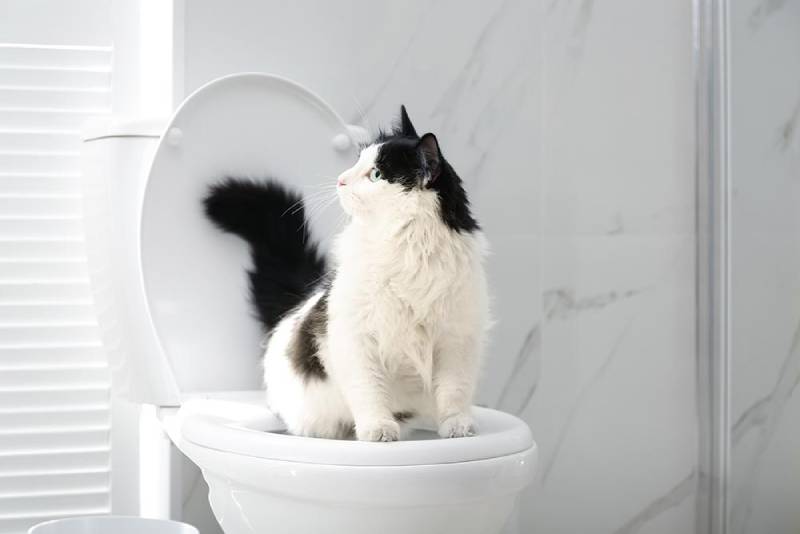Reasons Flushing Cat Poop Down Your Toilet Isn't a Good Idea - Advice for Safer Disposal
Visit My WebsiteWhat are your thoughts on How to Dispose of Cat Poop and Litter Without Plastic Bags?

Introduction
As feline owners, it's necessary to bear in mind just how we take care of our feline close friends' waste. While it might seem convenient to purge cat poop down the toilet, this technique can have destructive effects for both the atmosphere and human health and wellness.
Environmental Impact
Purging cat poop introduces unsafe pathogens and parasites into the water system, posturing a significant risk to aquatic communities. These pollutants can negatively affect marine life and compromise water quality.
Health Risks
Along with ecological problems, flushing cat waste can also posture health and wellness dangers to humans. Pet cat feces might have Toxoplasma gondii, a parasite that can cause toxoplasmosis-- a potentially serious ailment, specifically for expectant females and people with weakened body immune systems.
Alternatives to Flushing
Luckily, there are much safer and more responsible ways to dispose of feline poop. Think about the following alternatives:
1. Scoop and Dispose in Trash
One of the most typical technique of throwing away cat poop is to scoop it right into an eco-friendly bag and toss it in the trash. Be sure to use a devoted trash scoop and throw away the waste without delay.
2. Use Biodegradable Litter
Opt for biodegradable cat litter made from products such as corn or wheat. These clutters are eco-friendly and can be safely gotten rid of in the trash.
3. Hide in the Yard
If you have a backyard, think about burying pet cat waste in an assigned area far from vegetable yards and water resources. Be sure to dig deep adequate to avoid contamination of groundwater.
4. Mount a Pet Waste Disposal System
Purchase a pet garbage disposal system specifically created for cat waste. These systems utilize enzymes to break down the waste, reducing odor and ecological influence.
Conclusion
Accountable pet possession expands beyond offering food and sanctuary-- it also includes correct waste monitoring. By refraining from flushing cat poop down the bathroom and selecting different disposal approaches, we can decrease our ecological impact and shield human health.
Why Can’t I Flush Cat Poop?
It Spreads a Parasite
Cats are frequently infected with a parasite called toxoplasma gondii. The parasite causes an infection called toxoplasmosis. It is usually harmless to cats. The parasite only uses cat poop as a host for its eggs. Otherwise, the cat’s immune system usually keeps the infection at low enough levels to maintain its own health. But it does not stop the develop of eggs. These eggs are tiny and surprisingly tough. They may survive for a year before they begin to grow. But that’s the problem.
Our wastewater system is not designed to deal with toxoplasmosis eggs. Instead, most eggs will flush from your toilet into sewers and wastewater management plants. After the sewage is treated for many other harmful things in it, it is typically released into local rivers, lakes, or oceans. Here, the toxoplasmosis eggs can find new hosts, including starfish, crabs, otters, and many other wildlife. For many, this is a significant risk to their health. Toxoplasmosis can also end up infecting water sources that are important for agriculture, which means our deer, pigs, and sheep can get infected too.
Is There Risk to Humans?
There can be a risk to human life from flushing cat poop down the toilet. If you do so, the parasites from your cat’s poop can end up in shellfish, game animals, or livestock. If this meat is then served raw or undercooked, the people who eat it can get sick.
In fact, according to the CDC, 40 million people in the United States are infected with toxoplasma gondii. They get it from exposure to infected seafood, or from some kind of cat poop contamination, like drinking from a stream that is contaminated or touching anything that has come into contact with cat poop. That includes just cleaning a cat litter box.
Most people who get infected with these parasites will not develop any symptoms. However, for pregnant women or for those with compromised immune systems, the parasite can cause severe health problems.
How to Handle Cat Poop
The best way to handle cat poop is actually to clean the box more often. The eggs that the parasite sheds will not become active until one to five days after the cat poops. That means that if you clean daily, you’re much less likely to come into direct contact with infectious eggs.
That said, always dispose of cat poop in the garbage and not down the toilet. Wash your hands before and after you clean the litter box, and bring the bag of poop right outside to your garbage bins.
https://trenchlesssolutionsusa.com/why-cant-i-flush-cat-poop/

As an enthusiastic person who reads about Don’t flush cat feces down the toilet, I figured sharing that piece was a great idea. Do you know about anybody else who is intrigued by the niche? Do not hesitate to share it. Thanks a lot for your time. Kindly pay a visit to our website back soon.
Get Quote Now